This week after our brief introduction we explored the ideas of inertia in class. One of the students expertly summer up what inertia is. To quote her InterLACE posting “Objects are lazy unless you motivate them.” Of course, why are objects lazy? If we look at our textbook definitions, it might say that inertia is just a property of matter. For the curious who must know why, a few years ago, I might have said, “its a mystery, that is the way nature is, now stop asking so many questions.” Additionally, our textbooks emphasize that inertia is NOT a force, but a property of matter to resist forces. The summer of 2012 they finally made experimental headway in finding the Higgs Boson, which is believed to be responsible for the property we call inertia. I had some interesting discussion at last Fall’s AAPT meeting which you can read about here. There are also some nice links to a couple of YouTube Videos on the Higgs. A great meeting where I learned everything I was teaching is wrong.
We also discussed how the Principle of Inertia allows us to perform the table cloth trick and the students made a model of the table cloth trick using a cup, a coin, and a card. Using models to represent complex ideas is an important science practice and is finally receiving just due in the Next Generation Science Standards.
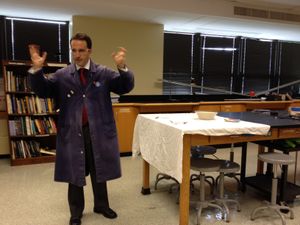
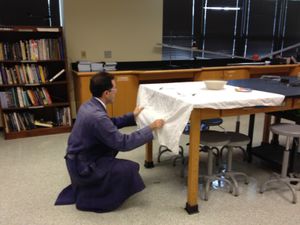

Some disgruntled seniors also attacked me with a sledge hammer. Fortunately, I had a cinder block with lots of inertia in the way.
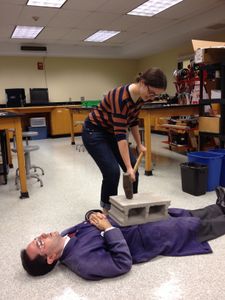
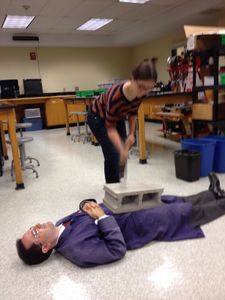
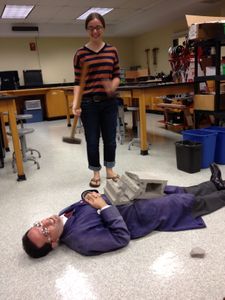
So a fun SHORT week with fun with Inertia with Slytherin and Ravenclaw. Unfortunately, Hufflepuff will have to wait until Monday. Rosh a Shona came very early this year, thus I have been out the rest of the week. In fact, Rosh a Shona hasn’t been this early since 1899, and the lunar calendar will not align this early again for another 76 years. I studied a bit of talmudic astronomy back in college, and the alignment of the lunar calendar which only has 354 days is interesting, where a leap month occurs every few years. Even then, it doesn’t keep up and there is drift. The drift is about 2 hours every 19 years, which add up to a day every 231 years. This 19 year cycle is called the Metonic Cycle after Meton of Athens. If you read the Wikipedia pages, be careful to discern the difference between a synodic month and a sidereal months. Synodic is how long it takes for the phase of the moon to repeat itself, whereas sideral is how long it take for the moon to make a complete orbit about the Earth. There is a difference because the Earth is spinning as the Moon orbits.
